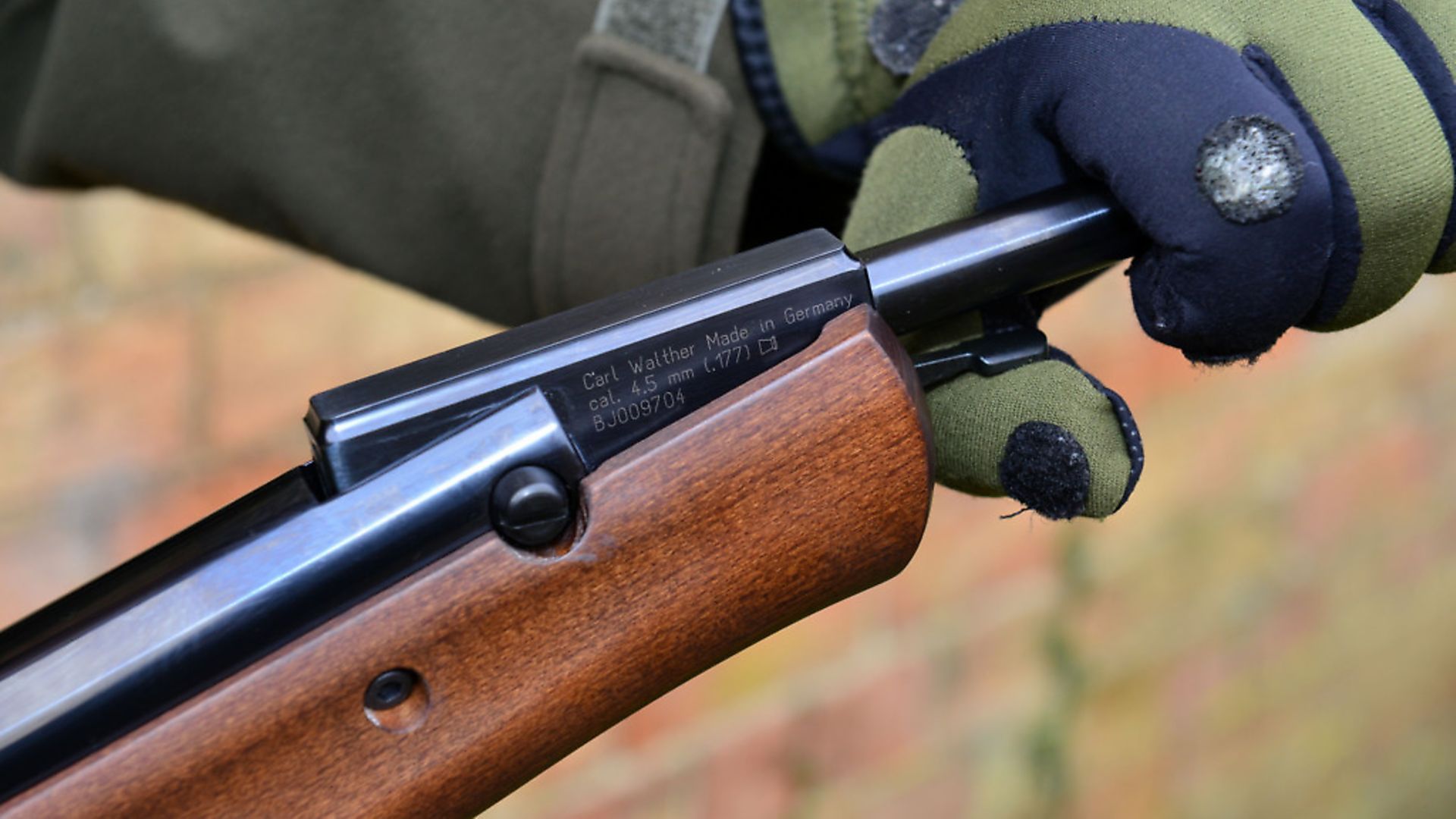Mark Camoccio brings us part 1 of his review of this excellent German break-barrel
 credit: Archant
credit: Archant
I’ve been lucky enough to have a succession of exciting assignments to cover as a journalist over the last few years, and one such memorable trip was a visit to the giant Umarex factory in Germany. As an airgun enthusiast, I was of course excited to see the factory that produces a wide range of CO2 replica pistols, the Walther brand of airguns, and a wide range of other models, all under one roof. The trip was to finish with us shooting live pistols and rifles from the Umarex stable, down in the basement, on their purpose-built test range, but whilst this was all quite thrilling, for me the highlight of the trip just had to be seeing first hand, the production line for the company’s Walther LGV spring-powered air rifle.
My chosen subject!
As someone who spent much of the ‘80s and early ‘90s travelling round the country, competing in top-level, field target shoots, using high grade, fully rebuilt custom specials from Airmasters, I have long appreciated just how far a spring-powered airgun can be pushed and tweaked, to maximise performance, and those Airmasters Mastersport models, initially based around the Feinwerkbau Sport, then latterly the Weihrauch HW77, really were works of art, akin to a formula one car with every component working at its optimum.
Taking a production air rifle, then stripping the action down, correctly lubricating, and then rebuilding with custom components where necessary, is an exacting business, requiring skill and specialised knowledge. Of course, fine fettling components and perfectly balancing the internals of a spring gun takes time, which isn’t always available at the production stage.
LGV concept
So when Walther/Umarex decided to build a production factory sporting airgun from scratch, but to incorporate all the recoil damping tweaks and tricks learned along the way from the custom houses, such as Airmasters and Venom Arms (now V-Mach), I was intrigued. The break-barrel LGV was the result, and a very slick rifle it is, too. On test is the rather swish-looking upgraded model – the Walther LGV Master Pro – and here we have all the benefits and internals of the standard model, in a high quality, stylish beech wood stock.
The Walther LGV Master Pro is a superb-looking, break-barrel airgun, and a bold piece of design. Given the weight of 9.3lbs, I would also label it ‘adults only’, but for those up to the job, you are in for a treat. That super-stylish beech sporter stock grabs the eye, but with a wealth of on-board features built in, this is a top-class sporter for the connoisseur. Specification wise, there’s an adjustable butt pad, barrel lock, barrel weight with threaded muzzle, quality two-stage trigger, extensive dovetail rails, and automatic safety, but the real selling point with this model is, as mentioned, the fully-tuned action and all the sophisticated recoil technology that has been utilised.
Large frame
First impressions are of a top-quality product, beautifully made and finished to the standard we expect from the Walther brand. Look closely, and it becomes obvious that this model has an oversized compression cylinder, too, evidence that Walther always planned on FAC versions at some point. Different export markets are often borne in mind in airgun production, and a larger cylinder allows for greater swept volume, and in turn, those greater energy levels. At 12 ft.lbs., as with the muscular HW80, this over-engineered Master Pro just ticks over nicely, as we shall see.
Looking first to the fully ambidextrous, lacquered beech stock; the silky finish, and perfectly executed laser-cut chequering all add to the attention to detail. Large dimensions are aimed at the adult shooter, and that extended fore end, subtle semi-schnabel tip, and the accentuated cheek piece, are not only aesthetically pleasing, but also offer great support. Add in that fulsome, drop-down pistol grip, and we have a great-handling gun, that certainly feels and looks the part. As for the metalwork, the deep lustrous chemical bluing is hard to fault, and with a professional mirror finish throughout, pride of ownership is all part of the deal here. Fancy a silencer incidentally, and the muzzle is threaded ready.
Internals
The overall design brief was to incorporate anything that could help to smooth internal operation, and reduce felt recoil. In practice, this means attention has been switched to the cocking stroke, the mainspring itself, the piston in flight, and any area where adverse friction could be reduced.
Next time, we’ll take a closer look at the Master Pro’s internals, and see what all the fuss is about!
Specification
Model: LGV Master Pro
Manufacturer: Walther
Country of origin: Germany
Type: Break-barrel, spring-powered
Calibre: .177 on test - .22 available
Weight: 9.3lbs
Overall length: 43inches
Barrel length: 15.5inches
Stock: Beech sporter with adjustable butt pad
Trigger: 2-stage XM unit
Velocity: using Air Arms Diablo Field/ten-shot string: High 767fps, Low 557, Ave 765, Spread 10fps
Energy: 10.9 ft.lbs.
Contact: Armex Ltd., Tel 0121 6434900
Guide price: £420.20
__________________________________________________
Gun test: Walther LGU Master
Editor’s gun test: Armex Walther Rotex RM8 Varminter Kit